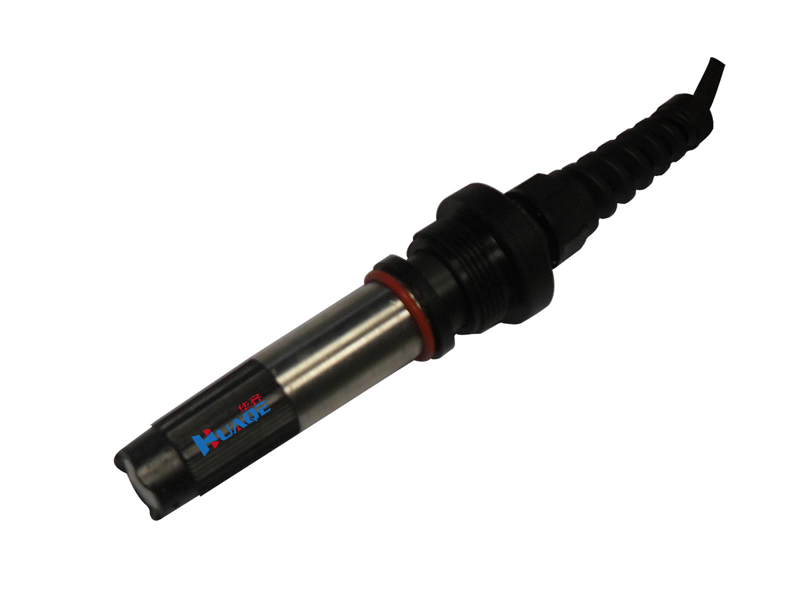

Industrial residual chlorine electrode (membrane polarographic constant voltage)
YL-658-XF industrial online residual chlorine electrode (membrane principle)
The electrolyte the permeable membrane separate the electrolytic cell the water sample. The permeable membrane can selectively allow ClO- to penetrate; there is a fixed potential difference between the two electrodes, the generated current intensity can be converted into residual chlorine concentration;
On the cathode: ClO- + 2H+ + 2e- → Cl-+ H2O
On the anode: Cl- + Ag → AgCl + e-
Due to the fixed conversion relationship between HOCl, ClO- residual chlorine under certain temperature pH conditions, residual chlorine can be measured in this way.
Technical index:
Measuring range: 0.005~20 ppm (mg/L) HOCl
Minimum detection limit: 5 ppb 0.05 mg/L HOCl
Accuracy: 2% ± 10 ppb HOCl
Response time: 90% less than 90 seconds
Storage temperature: -20~60℃
Operating temperature: 0 ~ 45℃
Sample temperature: 0~45℃
Calibration method: laboratory comparison method
Calibration interval: once/2 months
Maintenance interval: Generally replace the membrane electrolyte every six months
Inlet outlet water sample tube connection: the outer diameter is Φ10
YL-658-XG industrial online residual chlorine electrode (constant voltage principle):
The electrode of constant voltage principle is used to measure residual chlorine, chlorine dioxide ozone in water. The method of constant voltage measurement is to maintain a stable potential at the measuring end of the electrode. Different measured components produce different current strengths under this potential. It consists of two platinum electrodes a reference electrode to form a micro-current measurement system. The residual chlorine, chlorine dioxide, ozone in the water sample flowing through the measurement electrode will be consumed, so the water sample must be kept flowing through the measurement electrode continuously during measurement.
The constant voltage measurement method uses a secondary instrument to dynamically control the potential between the measuring electrodes, eliminating the effects of the inherent resistance redox potential of the measured water sample, making the electrode measure the current signal the measured water sample concentration. There is a good linear relationship between them, with very stable zero performance, ensuring accurate reliable measurement.
Technical Parameters:
Electrode: glass bulb, platinum inside
Reference electrode: gel with annular contact
Body material: glass
Cable length: 5 m three-core silver-plated cable
Working pressure: 10bar at 20℃
Size: length 110mm, diameter 12mm